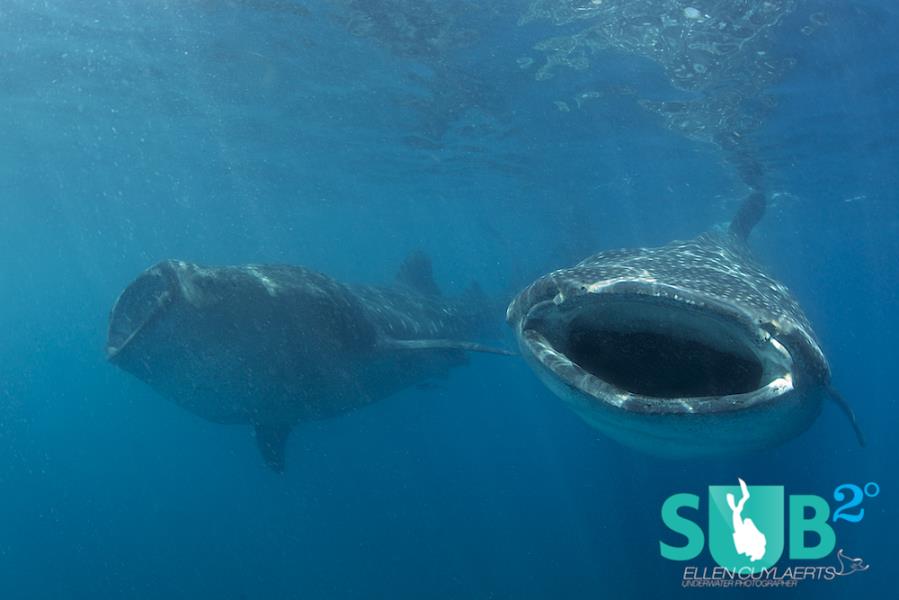
Published
Sep. 7,
2013
Personal Limits; Recognizing Pressure
I think I can safely say that every diver has felt a slight degree of pressure or fear at some point in his/her diving history. Whether it is during those first tentative kicks underwater into the unknown, diving in a new place, or using different equipment, our instincts sometimes raise their hackles and make us take notice. We should be aware of these limitations, act responsibly, and respect that we are out of our natural element.
Personal limits are mental guidelines that a diver creates to identify, for him/herself, what is a prudent and safe way to scuba dive. Divers also need to consider how they will respond when something happens outside those limits. These rules are created through diver training, opinions, attitudes, and past experiences. Recognizing your own training level, dive experience, and personal comfort zone is very important.
As an instructor, I hear many stories from divers about interesting situations that have occurred. Divers come to instructors for training and guidance; quite often they also need reassurance and support after an incident too. One story that comes to mind is of an Open Water level diver, who had completed between 20-30 non-training dives after certification. This diver was reasonably confident in diving the shallow, local dive site with the same buddy. Navigation had never been a strong point, and so the diver always relied on his buddy to take the lead underwater - never paying much attention to the finer points of dive planning.
The Dive
On vacation, the buddy team booked a boat trip to dive a famous wreck site that everybody had talked about. Excitement was building, and the operators gave a full briefing about the general dive procedures, and how to navigate on the wreck. The buddy team did not discuss the navigation or dive plan together, as they both assumed they would follow the same routine as at their local dive site - the more experienced buddy leading the way.
The wreck sat upright in 25m (82ft) of water, with the shallowest section at 15m (50ft). The plan was for the buddy teams to descend down the line to their chosen depth, then swim around the wreck, return to the shot line, complete safety stops, and ascend. The diver was slightly nervous, being in a new site, but didn't mention anything to the buddy, as he knew how much his buddy was looking forward to it.
Descending down the shot line first, the lead buddy reached the wreck, signaled "OK" but kept going - straight to 25m. Fear started to increase the deeper they went, although the nervous diver simply followed, eventually reaching a stage of hyperventilation. When the lead buddy turned to signal "OK" a second time - the diver was in a full state of panic.
The Solution
One of the lessons learned from this situation is that divers need to recognize their personal limitations, and to speak up about them before they escalate. A problem shared is a problem solved; no one wants to be on either side of a dangerous, panicky situation underwater. The divers should have discussed the dive plan fully with each other - including the maximum depth they felt comfortable with. Secondly, the least experienced person was only trained to dive to a maximum depth of 18m, as an Open Water diver, with limited confidence at a familiar dive site. No deep or wreck diving experience.
The lead buddy must be held to account too. By allowing the less experienced diver to rely on them completely, they encouraged poor dive planning habits and irresponsible behavior. Communication and buddy skills were definitely lacking between the team. Luckily, in this case, the buddy calmed the diver and they made a slow ascent back up to the boat. Admittedly, with the Open Water diver feeling embarrassed and scared.
To reduce or alleviate nerves, the Open Water diver should have spoken up earlier, making a dive plan to stay at a shallower depth. The dive could also have been aborted at any time; no reasonable person would force someone to complete a dive they weren't comfortable with.
The Outcome
It took the Open Water diver a lot of time with an instructor to get back into the water to dive again. They achieved it, but it was a lesson that could have been learned a safer way. If a dive doesn't feel right, then it is not right - the responsibility is with you to recognize this, no matter what level of training you have compared to anyone else.
With the correct guidance by a professional training agency, divers develop their experience levels safely. Instructors choose environments that offer conditions that are conducive to conducting responsible and fun diving.
Plan the dive, visualize solutions, and you will have a safe and happy outcome.
Featured Posts
-

Indonesia Bans Manta Fishing,...
Analyzing manta conservation in the context of marine conservation as a whole. (Part 1 of the series)
-

Isla Mujeres & The Whale Shar...
Every year, between June and September, hundreds of whale sharks can be found in the deep waters northeast of Isla Mujeres, Mexico.
-

King Crab Invasion
Thanks to Discovery Channel’s popular «Deadliest Catch» TV series, the red king crab has become known across the globe. Native to the north Pacific, this armored behemoth has invaded Norwegian waters and is considered a dang...



Load more comments
Timur K 8/12/2014 12:16:42 PM its amazing